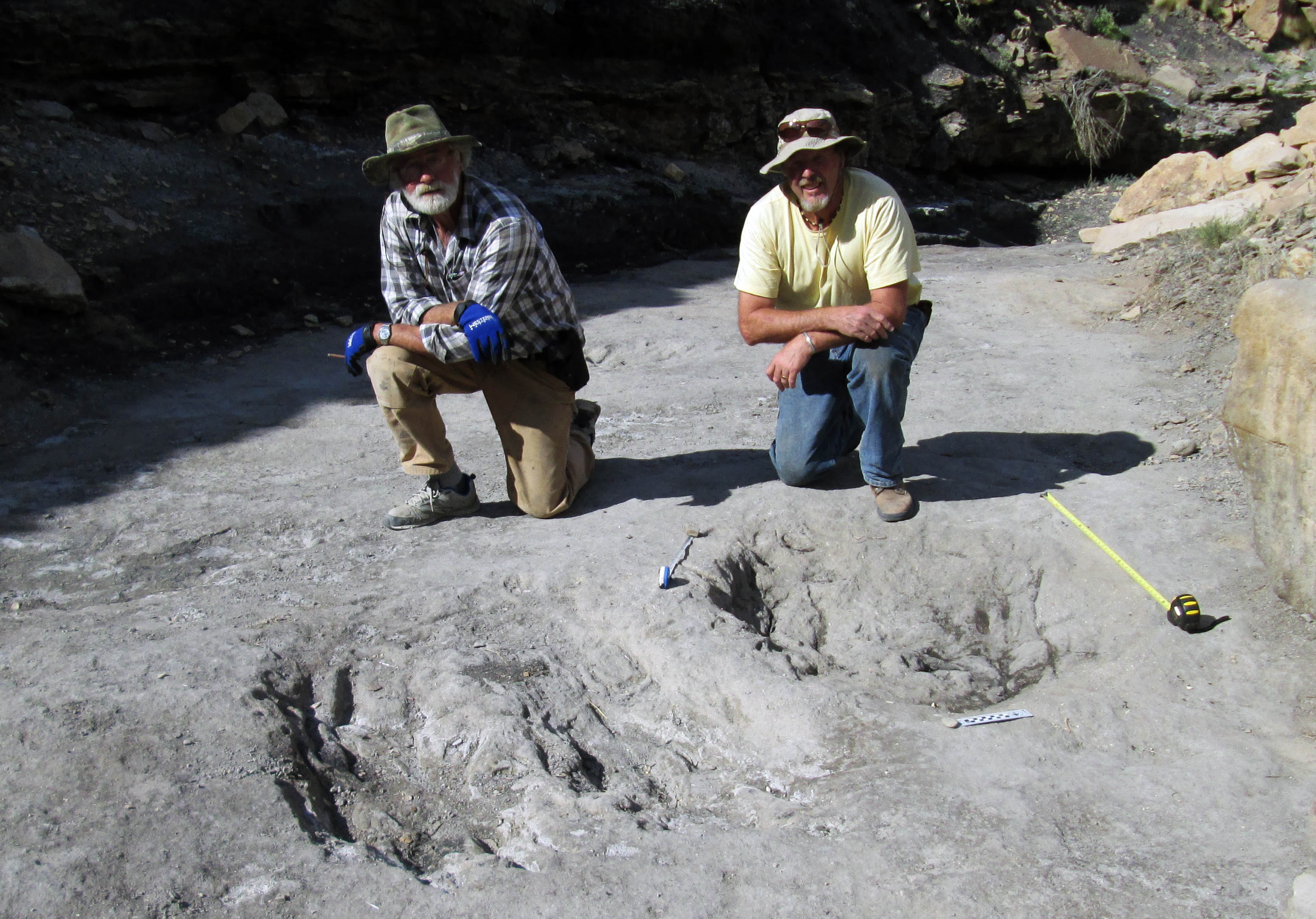The Local newsletter is your free, daily guide to life in Colorado. For locals, by locals.
Hollywood may need to rethink Jurassic Park. Rather than featuring a tropical island populated by a fearsome Tyrannosaurus rex and other toothy predators, the dinosaurs on screen may now need to be recast in a somewhat softer light—more along the lines of Romeo and Juliet, perhaps?
An international team of experts, led by University of Colorado Denver professor emeritus Martin Lockley, has identified the first-ever evidence of dinosaur mating rituals: parallel scrapes the size of bathtubs. Based upon comparisons with modern birds, the researchers believe these gouges, created during mating behavior similar to the scraping ceremonies that some ground-nesting birds engage in today, are tangible evidence of dinosaur foreplay. (Yes, you read that right.) During many of the modern rituals, male birds go into a frenzy of excitement and vigorously scratch the ground, presumably to show off their nest-building abilities to potential mates.

Because modern birds are believed to be the descendants of a small, non-flying member of the group of dinosaurs known as theropods—the same group to which the much larger T. Rex also belongs—scientists have long suspected that dinosaurs might also have displayed similar mating behaviors. But because most evidence of courtship—activities like singing love songs and flapping their wings—doesn’t leave behind any physical evidence that can be preserved in the rock record, their existence has, until now, been merely speculative.
Not anymore. The team identified dozens of scrapes in 100-million-year-old rocks at several Colorado sites, including the Dominguez-Escalante National Conservation Area south of Grand Junction, the Gunnison Gorge National Conservation Area, and Dinosaur Ridge, part of the famous National Natural Landmark near Morrison. There, two long scrapes can be seen above the road, about 100 meters north of the main tracksite and very close to a sign about ancient mangrove wood found in the same deposit.
Although this is strong evidence that the behavior of some dinosaurs was similar to that of modern birds, what Lockley, one of the world’s foremost authorities on dinosaur tracks and other fossilized footprints, can’t yet determine is who the intended audience was. The scrapes may have been made by a male trying to attract the attention of a potential mate, or they may have been gouged by a guy “strutting his stuff” in front of other males to demonstrate his prowess. Regardless, Colorado’s enormous “love scratches” are rewriting the prehistoric book of love.








